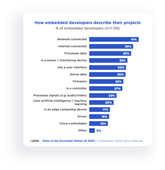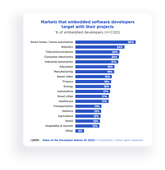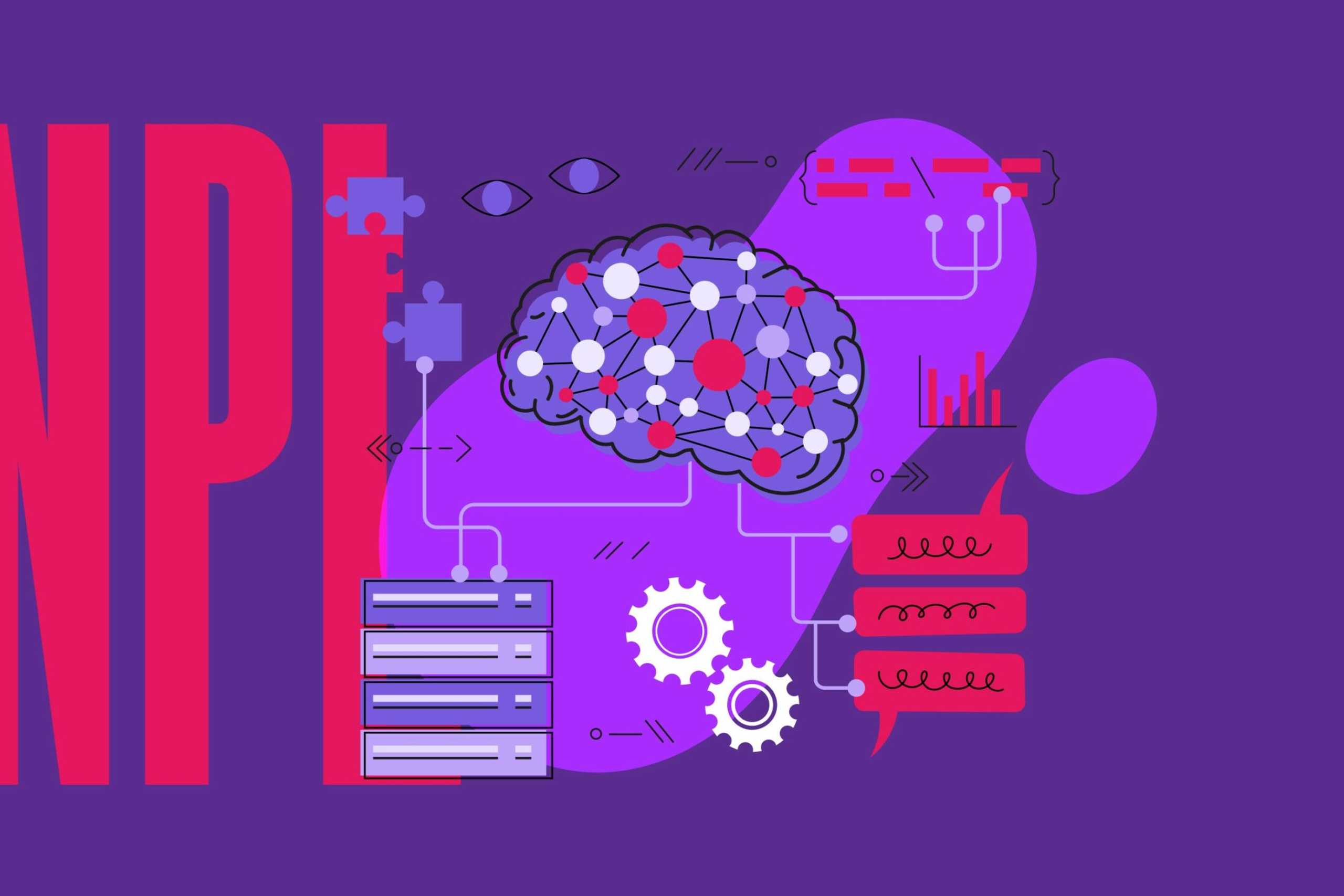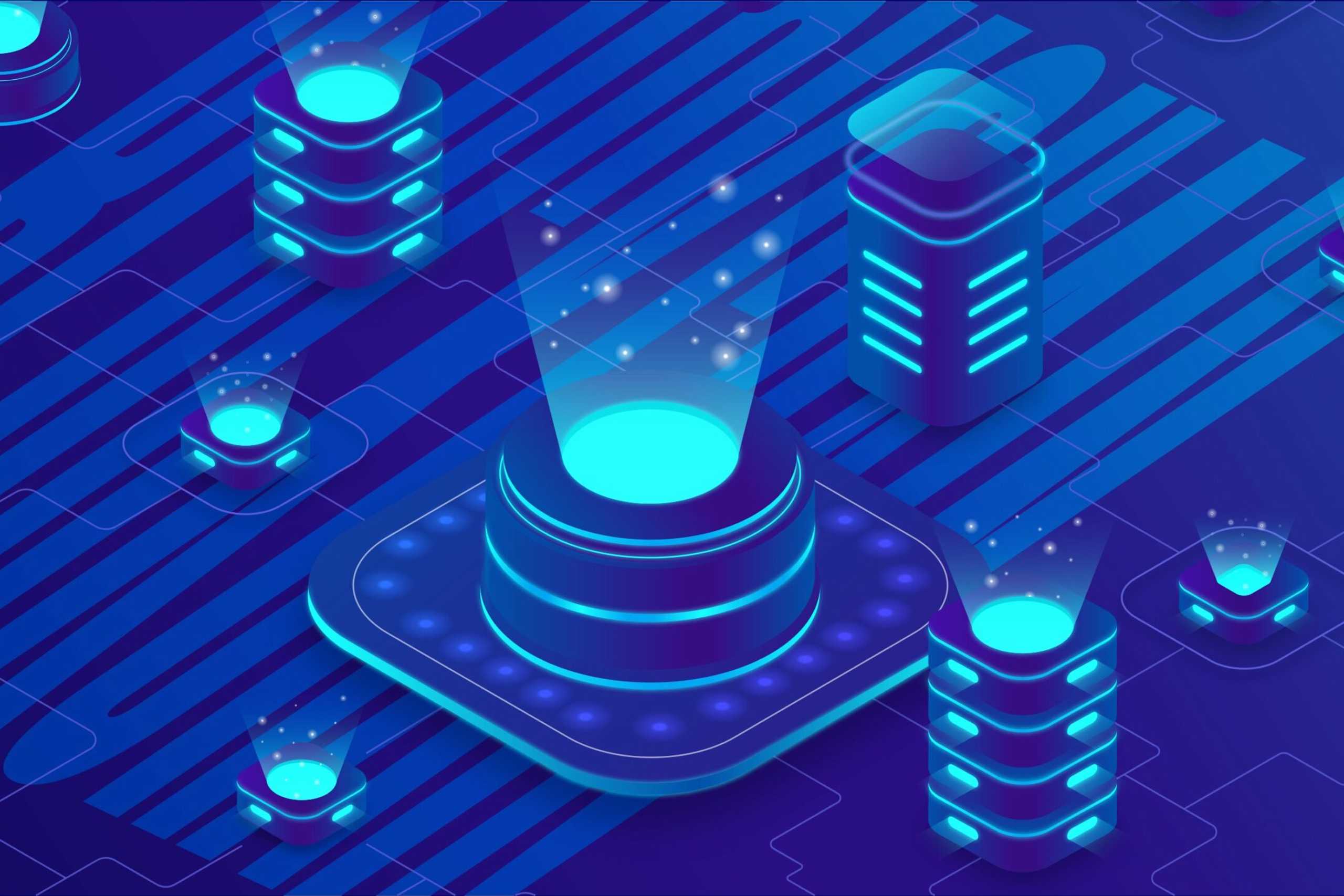
June 12, 2023
Embedded software refers to computer programs designed to perform specific functions in systems or on hardware devices that are not traditionally considered personal computers. Embedded software is found in various electronic items and plays a critical role in the functioning of modern-day technology. These necessary systems are found in simpler appliances, such as thermostats and security cameras, as well as more complex systems like medical equipment, point of sale (bank card) terminals, automobiles, and aeroplanes.
Embedded software developers are traditionally one of the smallest software development groups. As of Q1 2023, we at SlashData estimate that developers self-identifying as embedded developers comprise only around 5% of developers worldwide, a proportion that has been relatively stable for the last two years. Despite embedded developers’ modest community size, they can be found across the globe, with the largest two population clusters being North America and Western Europe – with 18% of embedded software developers in each of the respective regions. The next highest regional group is the Middle East and Africa, which collectively accounts for 15%.
Analysing data collected from more than 25,000 developers working in 160+ countries, we delve into the lives of embedded software developers. These developers are responsible for how humans interface with many critical technologies. Hence, understanding the landscape of those building and developing embedded systems can offer salient insight into industry trends and orient companies and developers alike as to where the field is heading.
Embedded systems and data processing
In 2022 we noted an almost 100% increase in the number of embedded developers who describe data science or data analysis as a part of their role compared to 2021. In our most recent global developer survey, around a third of embedded software developers described their role as having a data science or data analysis component.
Data processing and analysis are becoming more intertwined with embedded systems. One contributing factor is the growth in the number of Internet of Things (IoT) devices. Embedded software is an essential operating component of IoT devices, and as the number of IoT devices continues to multiply, managing, processing, and understanding the vast amounts of data accompanying this growth is a key challenge. Many embedded system developers appear to have recognised this trend and either adapted their roles or had their roles adapted for them to include this necessary data analysis and handling component.
What are embedded developers working on, and what markets are they targeting?
In order to better understand the embedded developer landscape, we asked developers working in this field to describe the projects they had worked on in the last six months. We find that the most common embedded software project description is “network-connected”, mentioned by 41% of developers, or “internet-connected” (36%). Both categories are fundamental to IoT devices.
Furthermore, 35% of embedded software developers stated they had worked on projects that processed data, while 30% stated their projects involved data storage. This project reporting again highlights the importance of data management in the embedded software development field and reinforces the importance of data analysis and processing as part of an embedded developer’s tool kit.
“23% of embedded developers have recently worked on projects that involved signal processing. They have, on average, 24% more experience compared to embedded developers working on other projects”
Around a third of the projects embedded software developers worked on recently involved sensor or monitoring devices. Meanwhile, 23% of embedded developers have recently worked on projects that involved signal processing – audio, video, etc. As these types of technologies that interface with their local environment continue to evolve, they will increasingly shape how humans interact with devices and their surroundings.
Embedded developers working on sensors and monitoring and signal processing technologies have, on average, 24% more software development experience than embedded developers working on other projects (an average of 5.8 years vs 7.6 years). Embedded technologies that incorporate signal processing require complex algorithms that can be computationally intensive and require specialised knowledge. This increased knowledge requirement is reflected in the additional software development experience embedded developers working with these technologies have.
In addition to being slightly more experienced, embedded developers working on sensory projects utilise the C programming language significantly more than other embedded developers. Embedded developers working on sensory projects use the C language more than half the time, 54%, compared to 40% of other embedded developers. We believe the inflated use of C here is likely due to its efficiency and popularity in the field of signal processing data.
Where is embedded software used?
Embedded software is utilised in an array of devices and for various applications. Hence, the markets that embedded software developers target are as diverse as the features the embedded software provides. We find that the most popular market is smart home appliances, targeted by 30% of embedded developers. As many IoT devices are increasingly sought after and can be found in the home – refrigerators, washing machines, doorbell cameras, etc. – this category’s lead aligns with our market observations.
“30% of embedded software developers are targeting smart home appliances – where many IoT devices are traditionally found”
Robotics comes in second place, with 24% of embedded developers reporting that they are targeting this market with their projects. The field of robotics heavily relies on embedded software to control movement, sensors, and environmental information processing – all crucial components for a robot’s functionality. As technology continues to advance, the field of robotics and embedded software will become even more intertwined in the development of intelligent systems that can be of benefit to various commercial markets such as manufacturing, transportation, and defence.
Embedded software developers are at the forefront of how humans interface with many technologies. With the increasing growth in the number of IoT devices, an increased number of devices will be connected to the internet and through networks and require embedded software to operate. This will necessitate embedded software developers to handle new demands in their workflow. We expect that these increasing expectations to come from both companies and consumers – such as the ability to process and analyse data and increased demand for device internet/network connectivity in IoT, respectively – will continue to push embedded developers to further broaden their skillset to be successful in keeping up with market requirements.
Contact us
Swan Buildings (1st floor)20 Swan StreetManchester, M4 5JW+441612400603community@developernation.net




